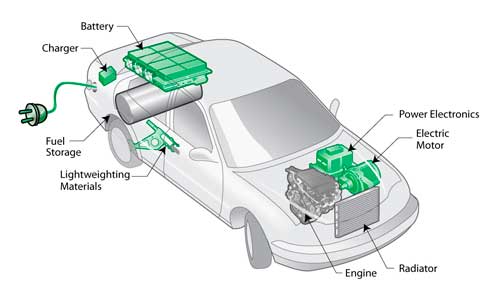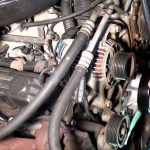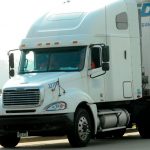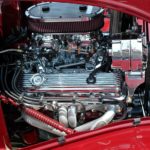
Recently I had been researching hybrid vehicles and technology to learn about them and maybe in future purchase a hybrid vehicle. While web surfing hybrids, I came across an article on the www.theguardian.com website that caught my attention. The title was “Can flywheel technology drive out the battery from car hybrids?” The article discusses the potential of a flywheel-based Kinetic Energy Recovery System (Kers) that could potentially replace the battery in hybrids. These vehicles are known as “Flybrids”
Before discussing these ‘flybrids’, here is some information on hybrids that I found to be interesting:
- Hybrid technology was first used in 1900 and in 1901, Ferdinand Porsche developed the Lohner-Porsche Mixte Hybrid, the first gasoline-electric hybrid automobile in the world. An interesting notation that I had found on Wikipedia.
- The Toyota Prius was the first mass produced hybrid vehicle and helped create the current hybrid craze that is going on today.
- 7.5 million hybrid vehicles have been sold through December of 2013 since they became massed produced in 1997, 6 million of these are Toyota Motor Company owned between Toyota & Lexus brand names.
- In 2009, the U.S. House of Representatives approved the ‘Heavy Duty Hybrid Vehicle Research, Development & Demonstration Act of 2009’ for heavy duty plug-in hybrid vehicles.
- According to Pike Research, the estimated global market of hybrid medium/heavy duty trucks & buses on the road was 9,000 vehicles in 2010 and expected 100,000 vehicles in 2015. Coca-Cola Enterprises has the largest fleet of hybrid trucks in North America.
Hybrid heavy duty trucks can haul some weight as well. Freightliner Hybrid technology was boasting their new line of trucks having a Gross Vehicle Weight Rating up to 55,000 lbs, a range of 200-320 hp, with torque output ranging from 520-750 lb/ft. These trucks can move/haul just about anything standard diesel engine trucks can as well. If you are in market for a new truck, you should give a hybrid truck a second look.
Now I want to reflect on the ‘flybrid’ article a little bit more. Flybrids are not only for automotive vehicles. There are buses in London currently operating with flybrid engines as a test run, with some also expected in Northern Ireland also.
The concept of the flybrid is, the kinetic energy recovered during braking would spin a flywheel. The recovered energy is stored in the spinning flywheel, to be released upon acceleration. The amount of energy a flywheel can store depends on its mass and the speed at which it is rotating. Certain prototypes have provided up to 80 bhp boost.
Flywheels are lighter than batteries and are easier to dispose of when they go bad. A flybrid engine offers a prospect of improved fuel efficiency as well. Unlike batteries, you can charge a flywheel up & slow it down multiple times without the degradation of performance.
Car manufacturers such as Porsche, Jaguar, Audi & Volvo have begun to experiment with flybrid technology in recent years. Audi Sport’s flywheel hybrid, the R18 E-Tron Quattro, became the first hybrid vehicle to win the legendary “Le Mans 24 hour endurance race.”
As intriguing as this flybrid and Kers technology is, I would not expect a big exploding trend just yet for flybrids on the market just yet. Toyota themselves haven’t shown interest in flybrids, and the major companies who have do not feel the technology is ready for mass production at this time.
In another 5 years or so, you could be debating, Hybrid or Flybrid, when it comes to your next vehicle purchase.


![Exhaust manifold crack and 3 other problems [How to detect them]](https://akmicorp.com/wp-content/uploads/2014/06/exhaust-manifolds-150x150.jpg)

